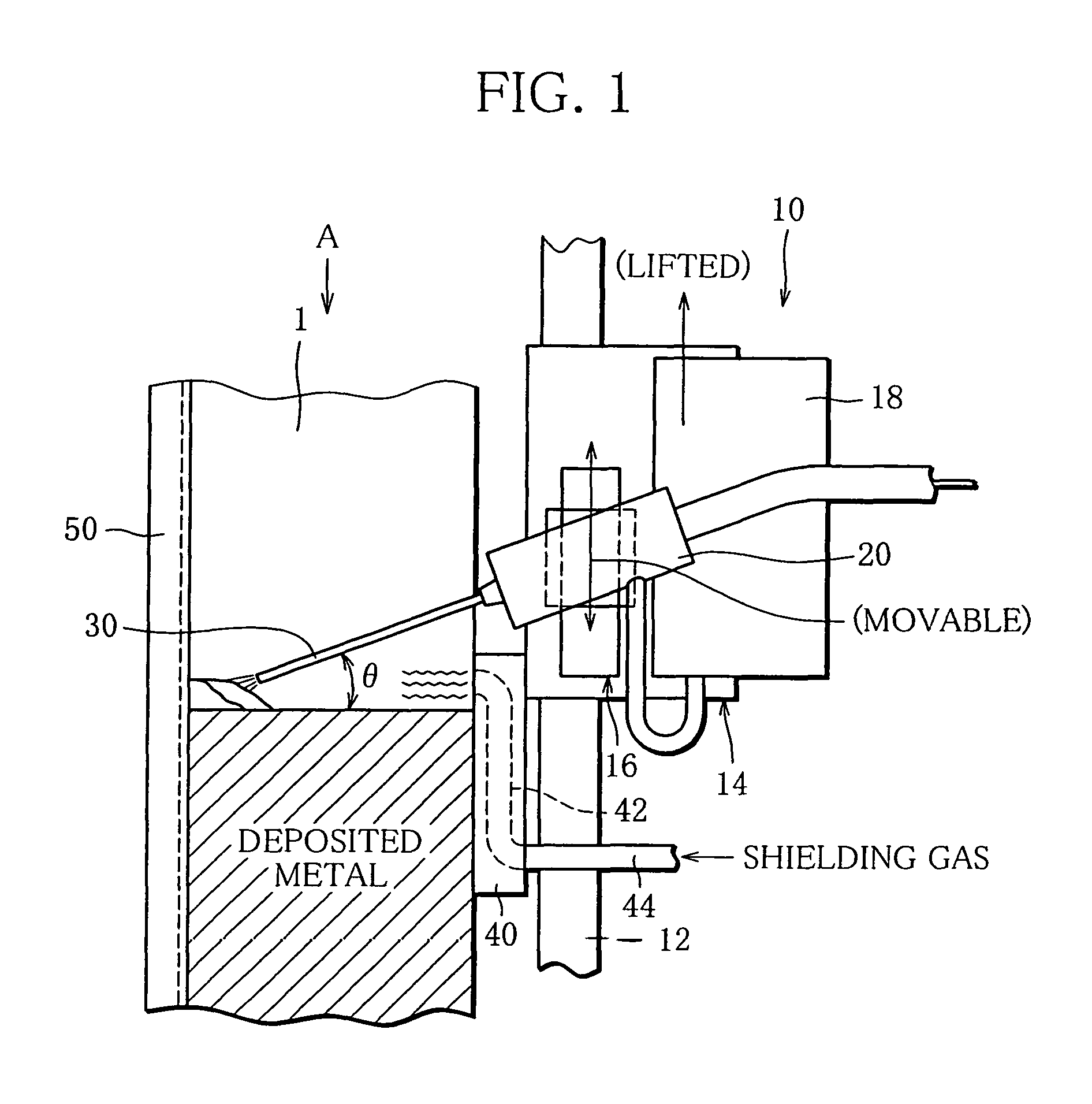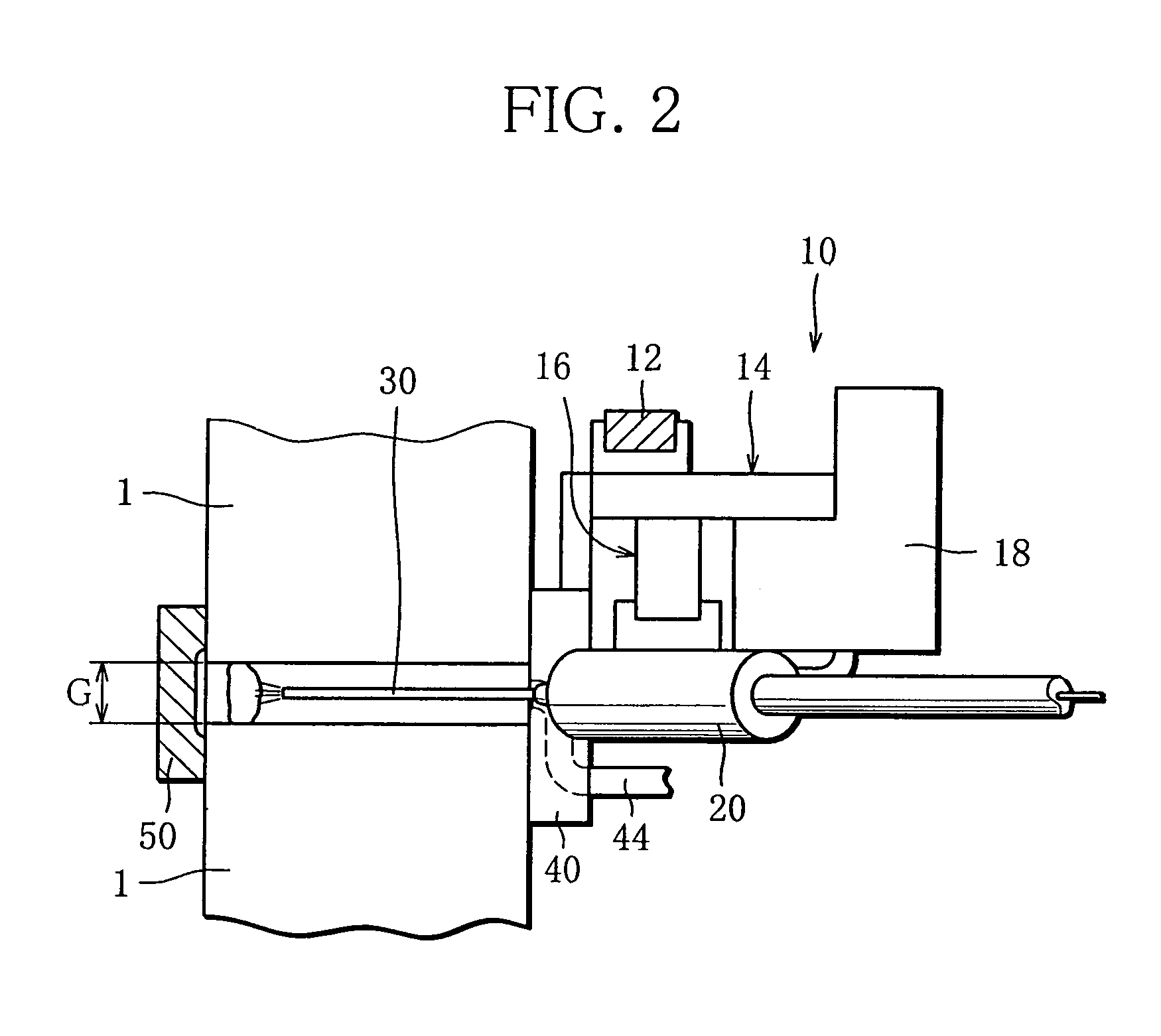Vertical-position welding method
a welding method and vertical positioning technology, applied in the direction of manufacturing tools, mechanical equipment, transportation and packaging, etc., can solve the problems of substantial increase in costs, mechanical strength, and weld deterioration, and achieve efficient and high-quality welding, reduce costs, and reduce costs
- Summary
- Abstract
- Description
- Claims
- Application Information
AI Technical Summary
Benefits of technology
Problems solved by technology
Method used
Image
Examples
Embodiment Construction
[0022]An embodiment of the present invention will be described below with reference to the accompanying drawings.
[0023]FIGS. 1 and 2 illustrate a state in which a pair of thick steel plates 1 are being welded together by an automatic arc welding unit 10 to which a vertical-position welding method of the present invention is applied. Specifically, the thick steel plates 1 are set up side by side such that an I-groove with a gap G (predetermined narrow gap) is formed between the mutually facing edges thereof. The automatic welding unit 10 is provided with a welding torch 20 for feeding a welding wire 30. FIG. 1 shows the automatic welding unit 10 with its welding wire 30 inserted into the I-groove between the thick steel plates 1, and deposited metal, in section, deposited inside the I-groove. FIG. 2 shows the thick steel plates 1 and the automatic welding unit 10 as viewed from direction A in FIG. 1.
[0024]The thick steel plates 1 are plates of steel with a large thickness, like the o...
PUM
| Property | Measurement | Unit |
|---|---|---|
| thickness | aaaaa | aaaaa |
| diameter | aaaaa | aaaaa |
| diameter | aaaaa | aaaaa |
Abstract
Description
Claims
Application Information
 Login to View More
Login to View More - R&D
- Intellectual Property
- Life Sciences
- Materials
- Tech Scout
- Unparalleled Data Quality
- Higher Quality Content
- 60% Fewer Hallucinations
Browse by: Latest US Patents, China's latest patents, Technical Efficacy Thesaurus, Application Domain, Technology Topic, Popular Technical Reports.
© 2025 PatSnap. All rights reserved.Legal|Privacy policy|Modern Slavery Act Transparency Statement|Sitemap|About US| Contact US: help@patsnap.com



